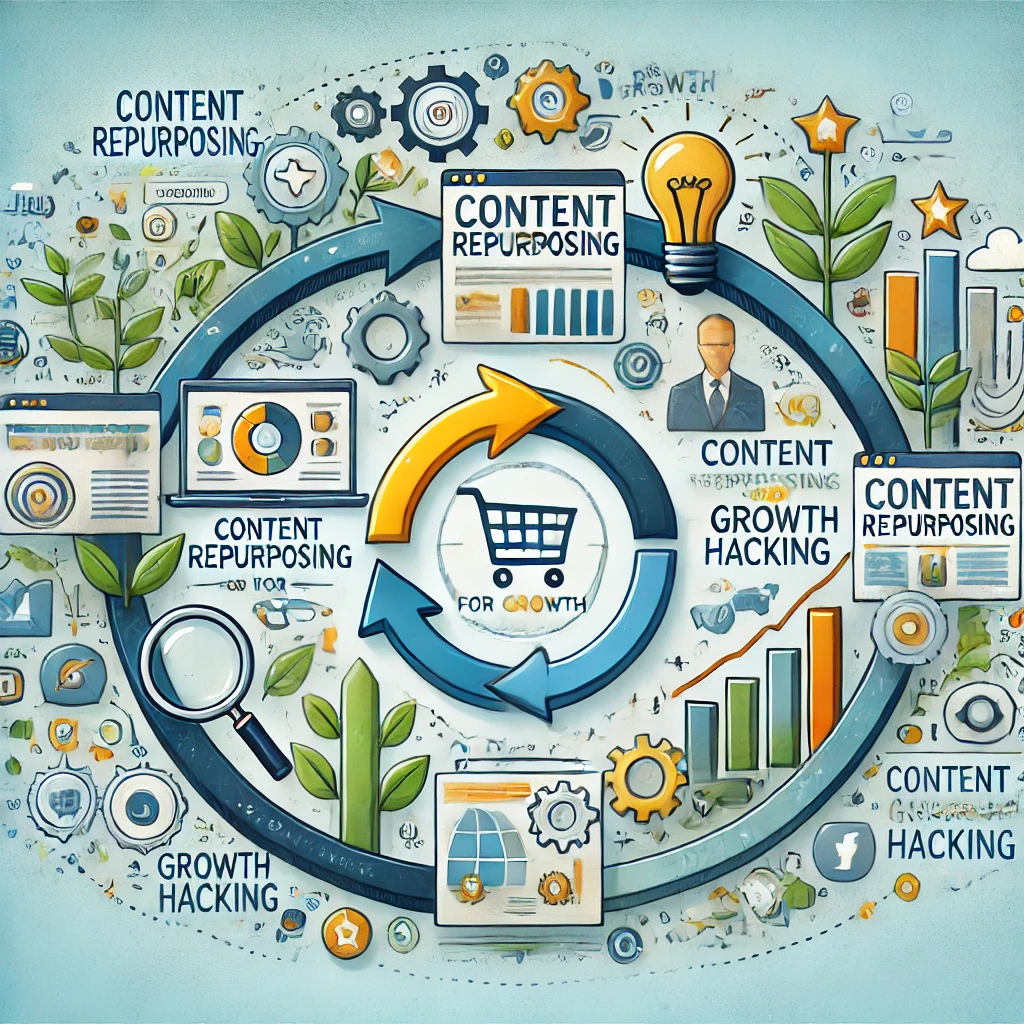How to Use Content Repurposing for Growth Hacking

Content repurposing is a powerful strategy that aligns perfectly with the principles of growth hacking. By taking existing content and reworking it into different formats, you can reach new audiences, maximize content ROI, and increase your brand’s visibility without the constant need for fresh content creation. This article explains how to leverage content repurposing as a growth hacking technique to boost engagement and growth.
What is Content Repurposing?
Content repurposing involves taking existing content and transforming it into new formats or updating it for different platforms. For example, a blog post can become a video, a series of social media posts, an infographic, or even a podcast episode. This approach helps you extract more value from your original content, extend its lifecycle, and engage a wider audience.
Why Content Repurposing is Key to Growth Hacking
Content repurposing is an essential growth hacking tactic because it focuses on maximizing output while minimizing input. By repurposing content, marketers can save time and resources while maintaining a consistent content flow. This strategy also enhances SEO efforts, improves brand recognition, and supports a multi-channel approach to content marketing.
Effective Content Repurposing Strategies
1. Transform Blog Posts into Videos
Videos are one of the most engaging content types. Transforming a well-performing blog post into an informative video can attract a new audience on platforms like YouTube, Instagram, and TikTok. Ensure that your video incorporates clear visuals and engaging commentary.
Learn more about creating effective social media videos in our video content guide.
2. Create Infographics from Data-Heavy Articles
Data-rich blog posts can be condensed into visually appealing infographics. Infographics are highly shareable, making them perfect for social media platforms like Pinterest and LinkedIn. Use design tools like Canva to create compelling infographics that summarize key points from your original article.
3. Convert Webinars into Blog Posts
Webinars are packed with valuable information. Transcribing a webinar and turning it into a detailed blog post or a series of articles allows you to reach audiences who prefer reading over watching videos.
Repurposing Strategies for Social Media
1. Break Down Long-Form Content into Social Media Posts
A comprehensive blog post can be broken down into bite-sized social media posts. For instance, a listicle article can be split into a series of Instagram or Twitter posts. This keeps your social channels active and engaging while driving traffic back to the original content.
Use FrenzyPost to schedule and publish these posts seamlessly across multiple platforms.
2. Create Carousel Posts
Turn blog content into carousel posts on platforms like Instagram and LinkedIn. Carousels encourage users to swipe through multiple slides, increasing engagement and time spent on your post.
3. Generate Short Clips from Long Videos
If you have long video content, create short, engaging clips for platforms like TikTok and Instagram Reels. This helps you tap into the trending short-form video format and capture users’ attention quickly.
Tools to Make Content Repurposing Easier
Several tools can make content repurposing more efficient and effective:
1. FrenzyPost
FrenzyPost helps marketers schedule and manage content repurposing across various social media platforms. Its integrated dashboard simplifies the process of publishing and tracking engagement.
Read more on how to plan and automate your social media posts.
2. Canva
Canva is perfect for creating visually appealing infographics and social media graphics. Its user-friendly design interface allows for easy transformation of text-heavy content into engaging visuals.
Benefits of Using Content Repurposing for Growth Hacking
By repurposing content, marketers can achieve:
- Increased Reach: Engage different audience segments who prefer varied content formats.
- Enhanced SEO: More content formats lead to increased backlinks and improved search engine visibility.
- Consistent Content Flow: Maintain a steady stream of content without constantly creating new material from scratch.
FAQs
1. What is the main goal of content repurposing?
The main goal of content repurposing is to maximize the value and reach of existing content by adapting it into different formats and platforms.
2. Which platforms are best for repurposing content?
Content can be repurposed for platforms like YouTube, Instagram, LinkedIn, Pinterest, and TikTok to target different audience preferences.
3. How can I track the success of repurposed content?
Use analytics tools to measure engagement, reach, and conversions for each repurposed format. Tools like FrenzyPost can help track these metrics across various social media channels.
4. Is content repurposing suitable for small businesses?
Yes, content repurposing is highly beneficial for small businesses as it maximizes existing resources and expands content reach without significant additional investment.
5. What type of content is ideal for repurposing?
Any content that performed well, such as blog posts, videos, webinars, and data-driven articles, is ideal for repurposing.
